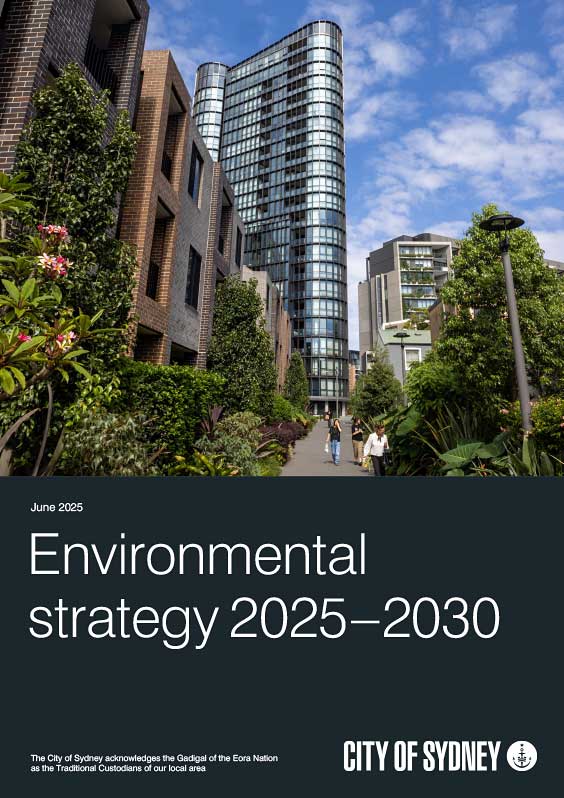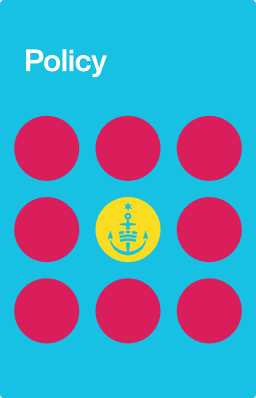Green report
Our green report documents our progress on meeting our environmental sustainability goals and targets.

2023/24 highlights
Download the report or read our highlights below.
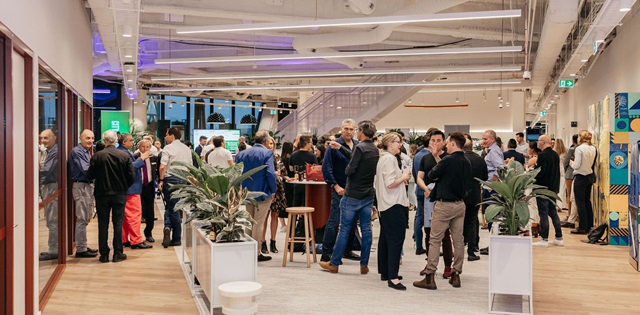
Climate action
We’re a leader in action on climate change. In 2011 we were the first Council in the country to be certified as carbon neutral, and since 2006 emissions from our operations have dropped 76%.
Since July 2020 we buy 100% renewable electricity from 2 wind farms and one solar farm in regional NSW. This cuts our emissions by 20,000 tonnes a year – enough to power around 8,000 households.
We continue to transition our fleet, plant and equipment away from fossil fuels. This year we replaced 20 passenger vehicles with new electric vehicles. This is our largest deployment of electric vehicles to date. In June 2024, 36% of our fleet was either electric or hybrid.
This year we developed a plan to electrify our buildings to reduce the energy they use and the emissions they produce. Our electrification plan includes transitioning gas hot water units to heat pumps or electric storage tanks. We’ll replace gas appliances in our kitchens, in line with our pledge to the Global Cooksafe Coalition.
We continue to invest in emerging technology to support the energy transition. The new Greenhouse Climate Tech Hub near Circular Quay accommodates more than 400 people dedicated to climate action. Our support includes a $31 million accommodation grant. A 10-year rental subsidy will assist emerging climate-tech businesses to grow and bring their ideas to market.
We also continue to invest in solar for social good. We awarded Barnardos a $60,000 innovation and ideas grant to install renewable energy technologies and create an education program for children in their learning centres. They partnered with Pingala, Solar Energy Enterprises and 100% Renewables to install a solar system on the Barnardos offices in Ultimo.
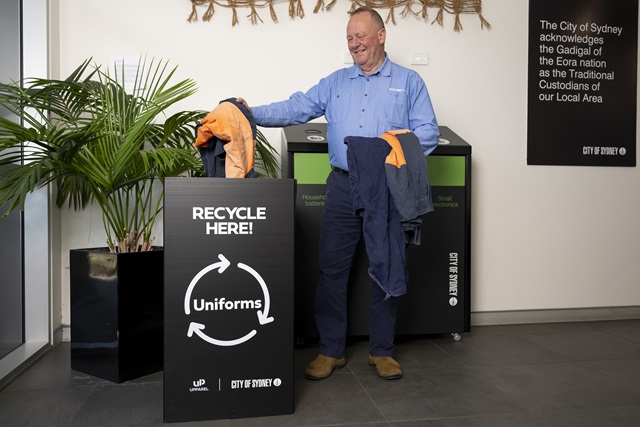
Waste and materials
What we do with waste and how we find new ways to manage it will not only reduce pollution, it will also help develop new opportunities in a circular economy.
In 2023/24, 92% of the waste generated from our properties was diverted from landfill. This is a significant improvement from 2017/18 when only 37% was diverted from landfill.
Our 3 food dehydrators processed 7.4 tonnes of food waste this year. This produced around 1.3 tonnes of soil conditioner that we use in our parks.
Clothing in Australia has a huge carbon footprint. From April 2023 to June 2024 we trialled a uniform recycling program with our cleansing and parks teams. We sent old uniforms to Australian textile recovery company, Upparel. By the end of the trial more than 500kg of uniforms were reused or recycled. Encouraged by the enthusiastic response from employees and supply chain benefits, we’ve made the uniform recycling program permanent.
We continue to invest in developing new services and products to reduce waste and support the circular economy. We funded Dempstah with a grant to process 100% post-consumer textile waste through new textile mill technology. Dempstah partnered with the Salvation Army to process clothing that was unsuitable for resale. The trial was a success, producing clean fibres that can be spun into yarn then knitted or woven into new fabrics or knitwear.
To make it easier for our communities to recycle more, we’re adding new items that can be reused or recycled to our recycling programs. This year we added blister packs, bicycles and scooters to the list of items accepted at our Recycle It Saturday events.
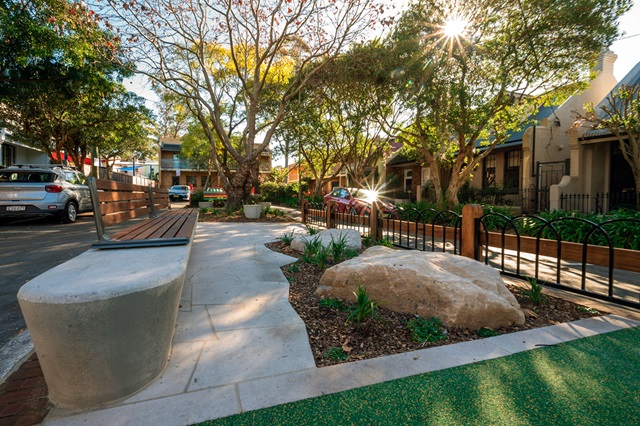
Greening our city
A green city helps reduce temperatures in hot weather, brings nature back to our urban spaces and improves the health and wellbeing of our residents and visitors.
In 2023/24 we planted 1,112 trees in our parks and streets, as well as 78,579 new plants across our area. Since 2008/9 our parks and open spaces have increased from 188 to 218 hectares.
We're striving for our city to have 40% green cover by 2050, including 27% tree canopy. The latest measurement in February 2024 showed our canopy is at 20.9%, an increase on our 2008 baseline which was 15.5%.
We continue to renew parks across the city to ensure they’re safe, in good condition and meet the needs of our communities. In the past year we renewed 9 parks, including playgrounds, pathways, furniture and landscaping.
Sydney City Farm provides a place for our communities to learn about urban agriculture and sustainable food production. This year our crop diversity increased – more than 200 different types of fruit, vegetables, herbs and flowers were grown. These crops are maintained by volunteers. Their efforts produced more than 745kg of fresh food for local charities, including culturally significant and interesting foods such as hops, sugar cane, babaco, plantain, taro and pandan.
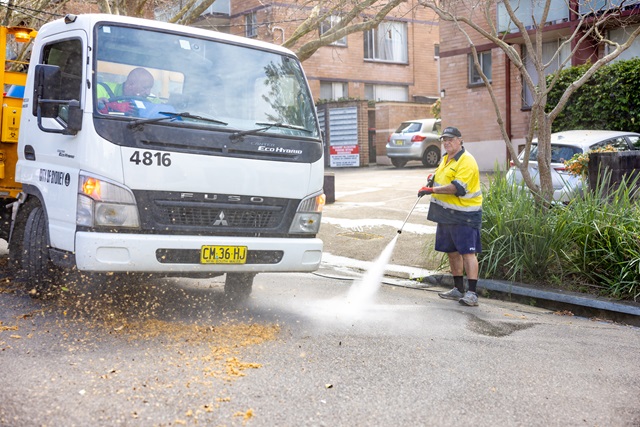
Water stewardship
Water is crucial to so many aspects of our lives and brings huge environmental, economic and social benefits. We must properly manage this finite resource to build resilience.
We aim to keep our operational use of drinkable water below 2006 levels even as we build new facilities and infrastructure. In 2023/24 we met our target of zero increase in potable water use against the 2006 baseline, using 365 megalitres, a 15% decrease from the 2006 baseline.
We formed an Australian-first partnership with Royal Prince Alfred Hospital (RPA) with a groundbreaking project to capture water from the hospital’s dialysis water system. We’ve worked closely with RPA to find a second life for this water. Our street cleaning teams now fill up their tanks in Camperdown with water that would have gone down the drain.
Since 2006 we’ve increased the irrigated area in parks by more than 50% while continuing to reduce potable water use. We’re now using less water for every square metre of green space we manage.
We’re trialling a smart irrigation system to ensure we meet demand for more irrigated spaces without putting pressure on water use. This system uses real-time soil and weather conditions to determine the best time to irrigate our parks and sports fields. We’re running the trial in 5 of our major parks, with water use reducing since the trial started.
Following a comprehensive repair project in 2023, our rainwater reuse systems are back in action. They’re now producing more than 20 million litres of of water each year. This is more water than we use for Redfern Park, Wentworth Park and Wynyard Park combined.
Green report 2023/24
Previous reports
We previously reported every 6 months. In 2021/22 we shifted to annual reports, in line with global reporting practices.
See the numbers we used to generate the graphs in the 2021/22 Green Report.

